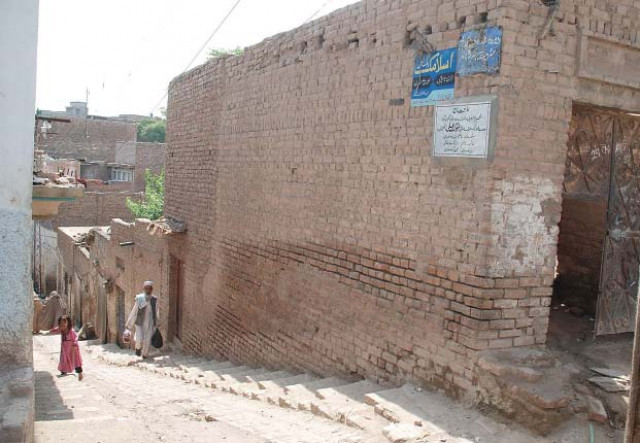Gandhara civilisation: Revered Buddhist site rediscovered near Peshawar
In 1909, a relic casket containing Buddha’s bone fragments and ashes was unearthed from the site.

A Gandharan Buddhist site, which vanished because of official and public neglect after it was excavated more than a century ago, has been rediscovered just outside Peshawar.
Members of the Directorate of Museums & Archaeology Khyber-Pakhtunkhwa and Tourism Corporation K-P (TCKP) managed to identify and re-ascertain the exact location of the famous Shahji-ki-Dheri Gandharan Buddhist site.
A spokesperson for the TCKP said that located outside the Gunj Gate of the old Walled City of Peshawar is a site of extraordinary archaeological importance where an imposing ‘stupa’ – a structure than contained revered Buddhist relics – once stood.
The now urbanised area, known as Akhunabad, presents a sorry picture of a once renowned historic site said to be was one of a kind in Asia.
The stupa is said to have been built during the reign of Kushan Emperor Kanishka in the 1st century AD. A Chinese pilgrim Hiuen Tsang visited the site during 629AD-645AD and called it the ‘tallest architectural building’ in this part of Asia. It is estimated that the stupa was equivalent to a present day 13-storey-tall building.
With the decline of Buddhism in the region, the traces of the stupa and monastery faded away.
The spokesperson said that French archaeologist Alfred Foucher visited Peshawar towards the end of the 19th century, and noticed two mounds, attempting to link them to Hiuen Tsang’s description of the place.
In 1908, D Brainerd Spooner, an American archaeologist and the first curator of the Peshawar Museum, undertook excavation work at the site then known as Shahji-ki-Dheri and unearthed the ruins of the stupa.
In March 1909, Spooner made a sensational discovery that stirred the archaeological world – a relic casket in gilt-bronze containing Buddha’s bone fragments and ashes. The British government later gifted the Buddha relics to Burma.
The spokesperson said that subsequent excavation work yielded priceless Gandharan statues and other objects which are on display in museums around the world. When the excavation work stopped, the significance of the area was forgotten.
Starting out with a brick factory, the locality was gradually built up after the creation of Pakistan. Nowadays, the locality goes by the name of Akhunabad – a maze of unplanned and densely populated urban settlements sprung up over the mounds in recent years.
The TCKP spokesperson said that a team comprising Director Museums and Archaeology and Curator Peshawar Museum Nidaullah Sehrai, Zahoor Durrani of Sehrai Tours, Ali Jan of TCKP and Muhammad Humayun Akhund of Revenue Department visited Akhunabad. Employing satellite imagery, old revenue land maps and archival records, the team was able to survey the locality and narrow it down to a 24-kanal stretch of land where the stupa and monastery once stood.
Published in The Express Tribune, August 27th, 2011.













COMMENTS
Comments are moderated and generally will be posted if they are on-topic and not abusive.
For more information, please see our Comments FAQ